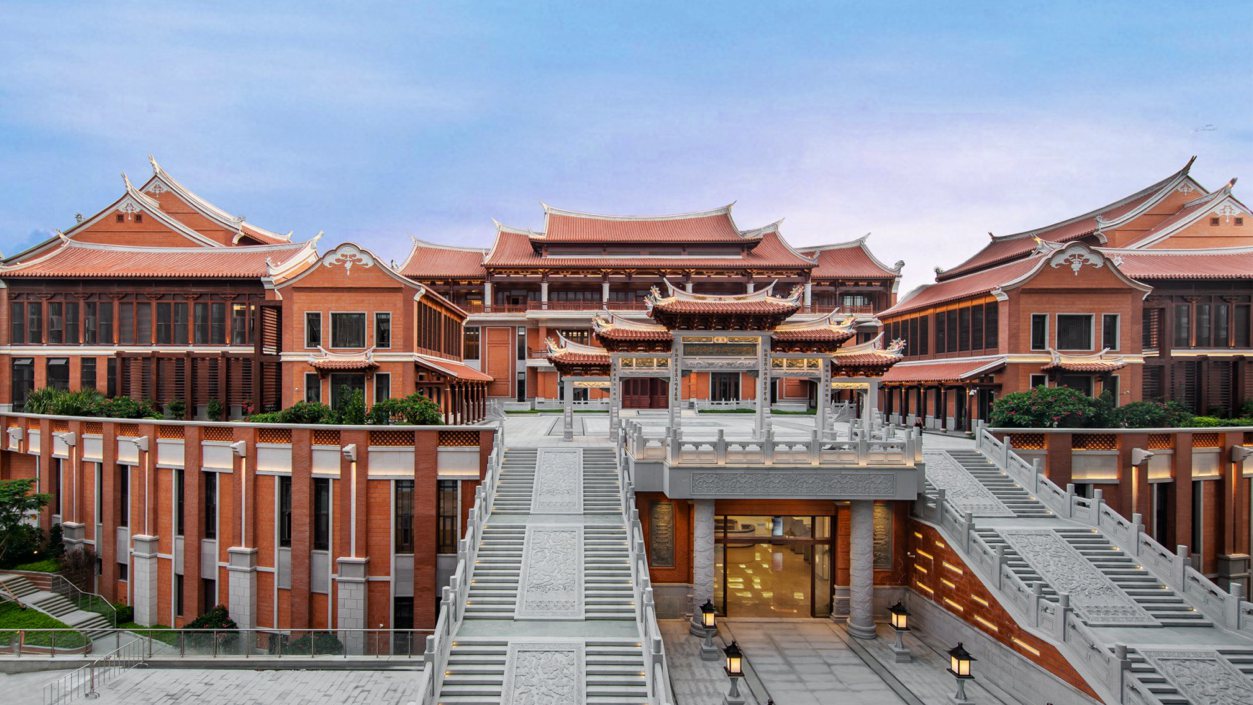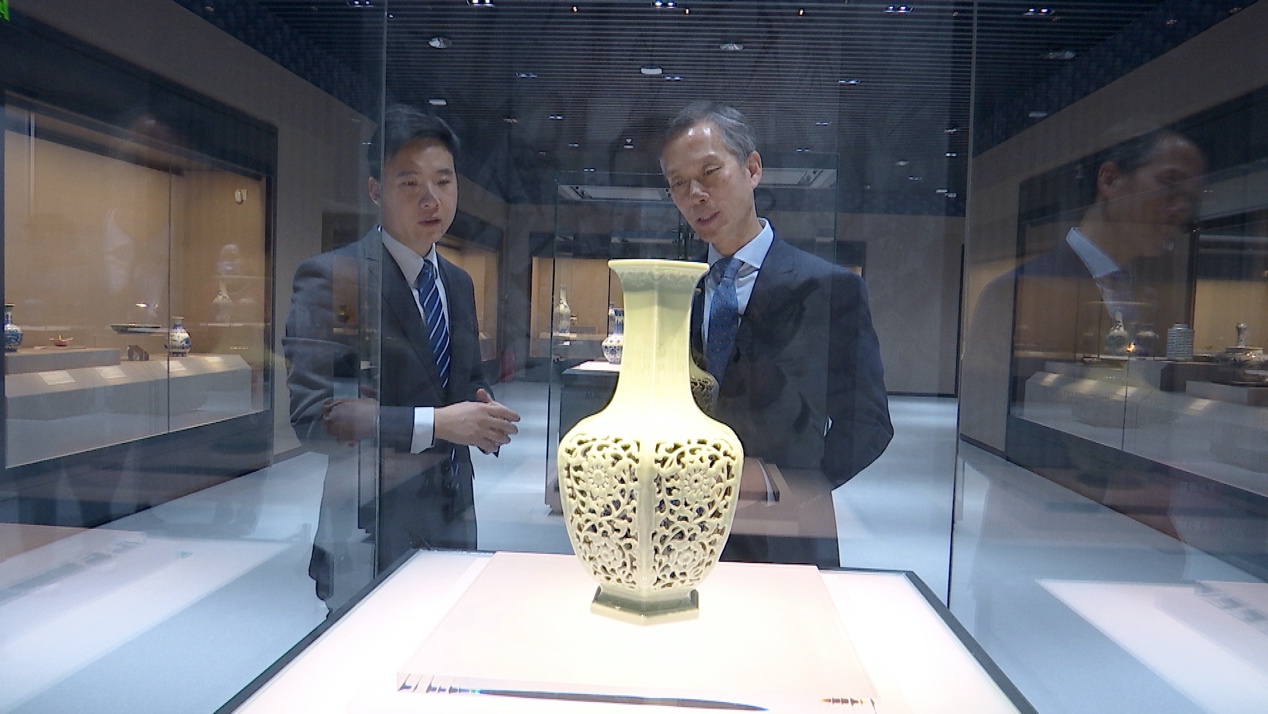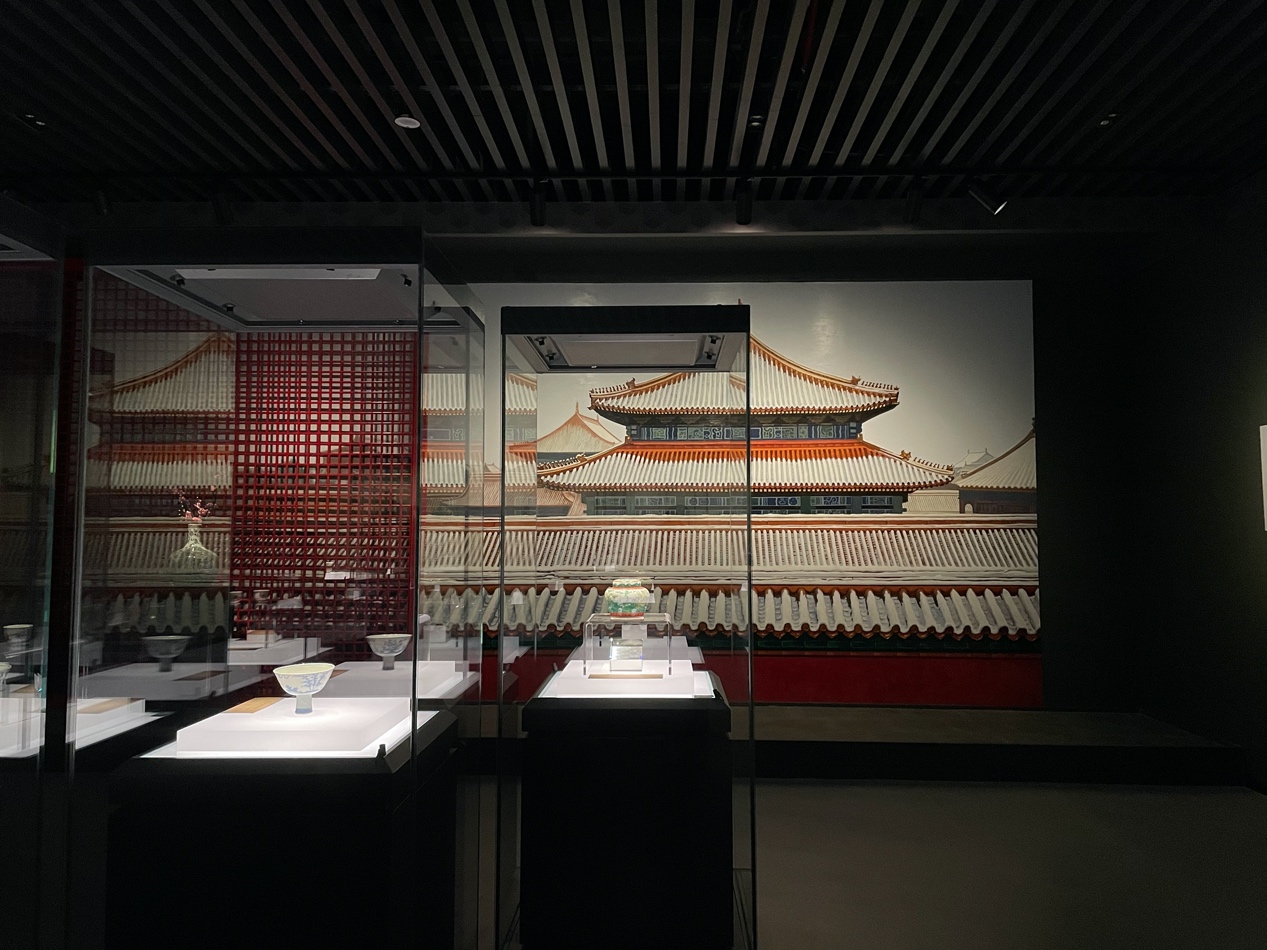02:22

The ancient Maritime Silk Road once served as an essential economic and cultural bridge connecting the East and the West. To disseminate the cultural exchange on the legendary route, a new Maritime Silk Road Museum has been established in Shishi, Quanzhou, southeast China's Fujian Province.
Covering an area of nearly 11,500 square meters, Shimao Maritime Silk Road Museum features some 2,000 cultural relics from porcelain and tea sets to silk that were famous along the legendary oceanic route.
Li Zhongmou, the curator, told CGTN that in addition to the displays, they are using digital and interactive multimedia to showcase the route's history. They hope visitors would learn more about the cultures of the Maritime Silk Road here.

Curator Li Zhongmou (R) told CGTN's Wu Lei that this porcelain relics from the Qing Dynasty is a combination of the East and the West in style. /CGTN
Curator Li Zhongmou (R) told CGTN's Wu Lei that this porcelain relics from the Qing Dynasty is a combination of the East and the West in style. /CGTN
Flourishing between the 2nd century B.C. and 15th century, the Maritime Silk Road served as a gateway of trade and cultural exchange between ancient China and foreign countries.
"Quanzhou was the starting point of the ancient Maritime Silk Road, and the city of Shishi is also my hometown, the culture of the Maritime Silk Road was spread to Southeast Asian and other countries from here. That's why I built this museum right here," Hui Wing Mau, chairman of Shimao Group, explained.

The Palace Museum has brough over 300 relics to this museum this time. /Fujian Shimao Maritime Silk Road Museum
The Palace Museum has brough over 300 relics to this museum this time. /Fujian Shimao Maritime Silk Road Museum
This museum was established by Shimao Group, a global real-estate giant and is backed by the Palace Museum, one of Beijing's most iconic landmarks. The latter is showcasing more than 300 relics in the Maritime Silk Road Museum, promising to display more in the future.
Wang Xudong, director of the Palace Museum, told CGTN that collaborations like this, between a national museum and a private one, set a good example. In the future, national museums will give more support to private ones, and their expertise in protecting and managing relics will help these private museums better manage their collections.
Connectivity and exchanges are fundamental to the Maritime Silk Road. This museum plans to cooperate with more domestic and foreign counterparts to showcase more cultural relics to people worldwide.
(Cover: Fujian Shimao Maritime Silk Road Museum is ready to welcome tourists. /Fujian Shimao Maritime Silk Road Museum)

